Are Snake Plants Easy to Take Care of
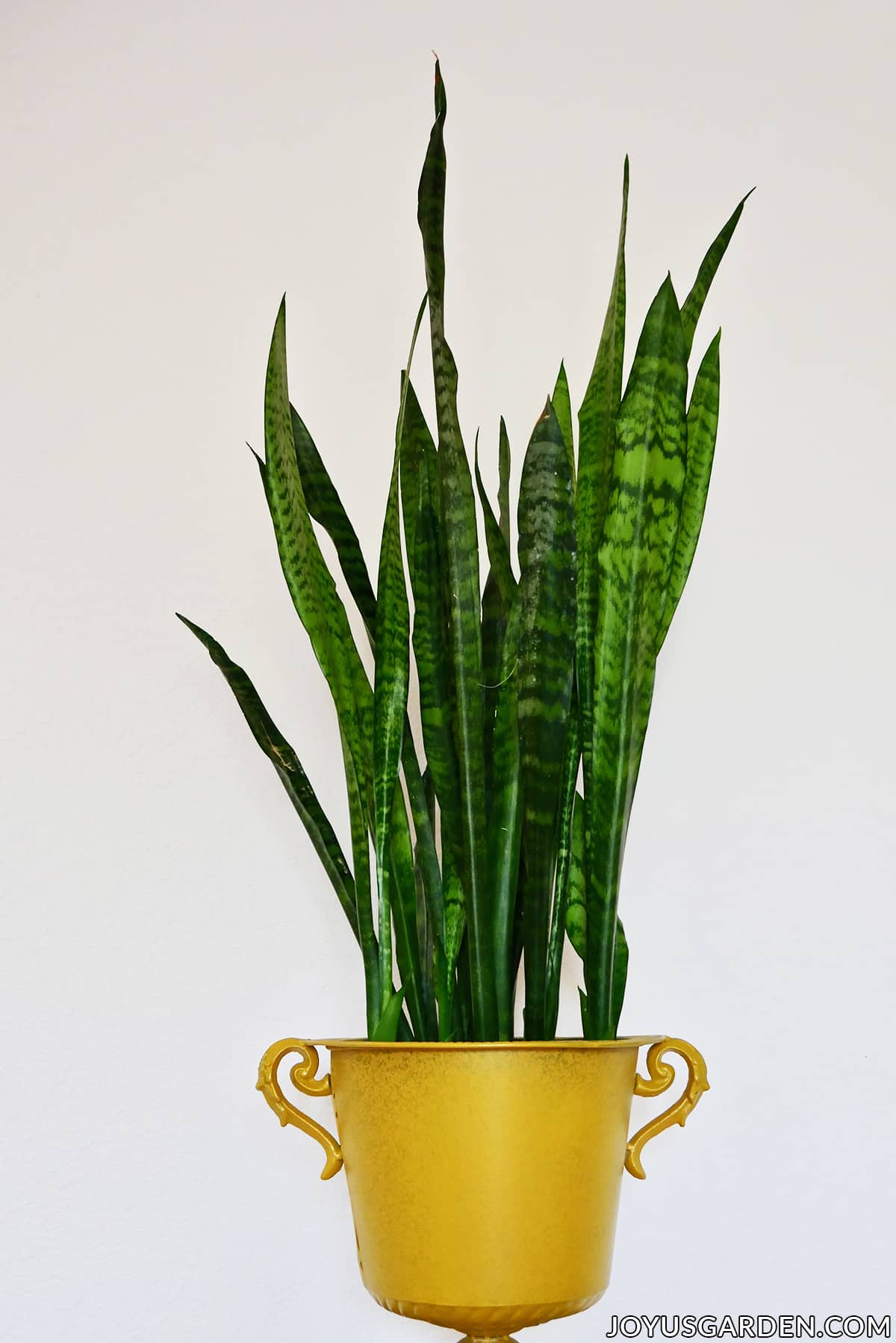
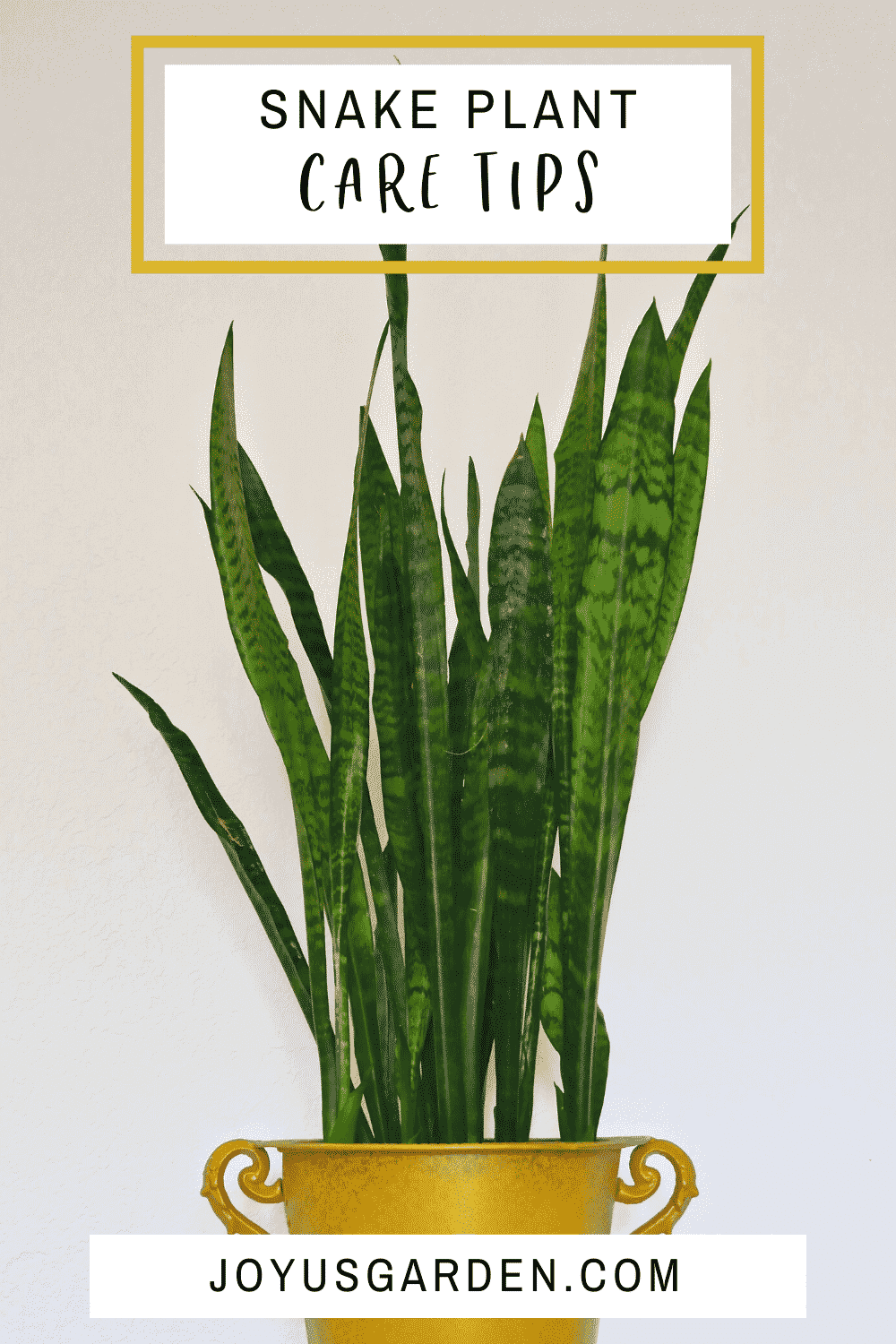
Sansevierias are popular & easy-care houseplants. Here you'll find Snake Plant Care tips including things good to know to keep yours growing.
Sansevierias (Snake Plants) are some of the toughest plants you can find. Whether indoors, in your garden or on your balcony, these spiky beauties can put up with almost anything. They're easy to grow, but there are a few things you should know. Keep reading for Snake Plant care as a houseplant – you'll see how low maintenance they really are.
Snake Plant Care Tips
These plants aren't favored by everyone because of their strong, bold look and tough, pointed leaves. They're definitely not the soft, "touchy-feely" kind of plants but certainly have character and present quite the striking silhouette.
I, on the other hand, love them and have quite a few of them. I've had many varieties, both growing in pots and in the ground in my Santa Barbara garden
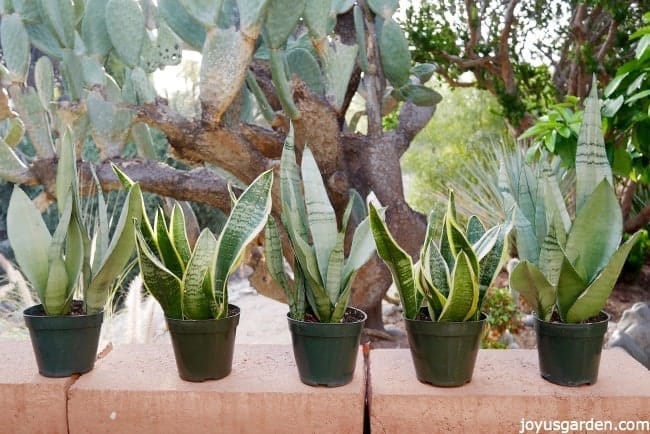
Their modern, edgy feel appeals to me along with how easy they are to take care of. I now live in Tucson, Arizona where I have them growing in my home along with a couple in pots outside in the bright shade on my covered patio. The strong desert sun will fry them but they handle the dry air like champs.
These evergreen perennials are very long-lived, unlike some Houseplants. If you're looking for your own Snake Plant, there are many different species and varieties on the market with more new ones being introduced each year
Some Of Our General Houseplant Guides For Your Reference:
- Guide To Watering Indoor Plants
- Beginner's Guide To Repotting Plants
- 3 Ways To Successfully Fertilize Indoor Plants
- How to Clean Houseplants
- Winter Houseplant Care Guide
- Plant Humidity: How I Increase Humidity For Houseplants
- Buying Houseplants: 14 Tips For Indoor Gardening Newbies
- 11 Pet-Friendly Houseplants
Size
Snake Plants grown as houseplants average in height from 8″ to 7′. You can buy them in 4, 6, 8, 10, 12, and 14″ grow pots.
Uses
They're used as tabletop and narrow floor plants, as well as in dish gardens and kokedama.
Growth Rate
Sansevierias have a slow to moderate growth rate. They spread by underground stems called rhizomes which pop up as new growth.
In stronger natural light they'll grow faster and slower in lower light.
Water
Easy does it with the watering – this is essential to Snake Plant care. You want to be careful not to overdo it because your plant will rot out. Always make sure the soil is almost completely dry before thoroughly watering again.
Water your Snake Plants every 2-8 weeks. The watering schedule will vary for you depending on your home environment, type of soil mix, and pot size.
You can read my Guide to Watering Indoor Plants to get a better idea when determining a watering schedule.
I water my Snake Plants less often in the winter months (every 8 weeks for those in large pots) when the temps are cooler and the sun is less intense. This is the time of year when your houseplants like to rest.
More on this subject: Winter Houseplant Care
Be sure not to let any water build up in the center of the leaves (where they form a cup) because this can lead to a mushy plant and ultimately rot.
So, if you travel or tend to ignore plants, this is the plant for you.
Light
Even though Sansevierias prefer medium light (which is about 10′ away from the west or south window), they'll also tolerate low light and high light. How versatile they are!
Note: In lower light conditions, the darker leafed species and varieties ( like S. trifasciata & Sansevieria hanhnii jade) do better and are the ones you should buy. Snake Plants with brighter variegations will become less intense and patterned in low light.
Just be sure to keep Snake Plants out of the direct, hot sun (west or south window) because they'll burn in a heartbeat.
More easy care indoor plants: Easy Care Houseplants for Low Light
Air Circulation
These plants don't mind the dry or stale air in our homes and offices. They'll also do well in bathrooms where the humidity tends to be much higher. This is another versatility factor that gives this houseplant the label: "diehard".
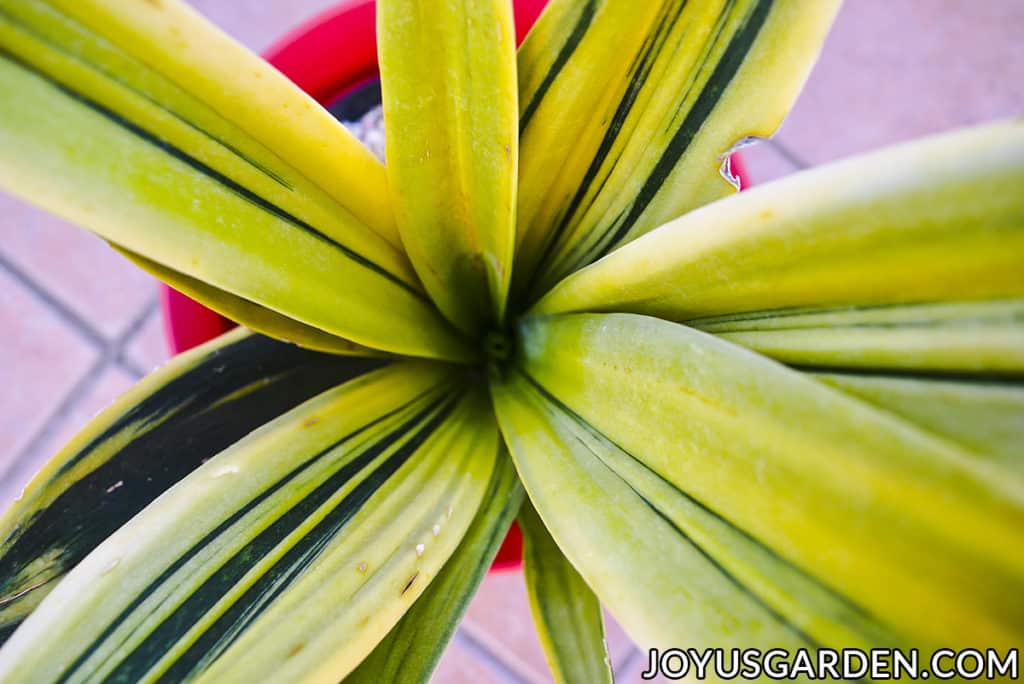
Temperature
Sansevierias will tolerate a wide range of temperatures in our homes. If your house is comfortable for you, it'll be so for your Snake Plants. Just keep them away from cold drafts and heating or air conditioning vents.
I have 1 in a pot growing outdoors that does fine. We get very hot here in the desert in the summer and a handful of evenings can dip below freezing in the winter.
If yours is outdoors for the summer, just know they don't tolerate frost or snow so get them indoors before the temperatures drop too low.
Pests
Snake Plants are highly pest-resistant but in poor conditions, they can get mealybugs and/or spider mites.
If yours gets mealybugs, I've got you covered with this post on How to Get Rid of Mealybugs and Aphids. Here you can find Spider Mites Control.
It's best to take action as soon as you see any pest because they multiply like crazy. Pests can travel from houseplant to houseplant fast so make you get them under control as soon as you see them.

Propagation
Once you've got a Snake Plant, you may never need to buy another one. They're very easy to propagate.
When growing in the garden they'll propagate on their own as they spread by underground stems called rhizomes. As a houseplant, division followed by leaf cuttings are the easiest ways.
You can check this post and video I did about the three ways to Propagate Sansevierias.
Soil
Snake Plants are easy-going with their soil nutrients requirements. Because root rot is one of its main issues that kill these plants, I'd recommend a fast and well-draining soil to help prevent this.
I use succulent and cactus mix combined with potting soil in a ratio of 1:1. If the mix seems too heavy, I add in a few handfuls of pumice or perlite to up the ante on the aeration and drainage factor. I'll also do this if the pot only has 1 or 2 smaller sized drain holes.
You can read more about the soil mix I use for Snake Plants under "Repotting".
I now make my own mix. Here's a Recipe for DIY Succulent and Cactus Mix.
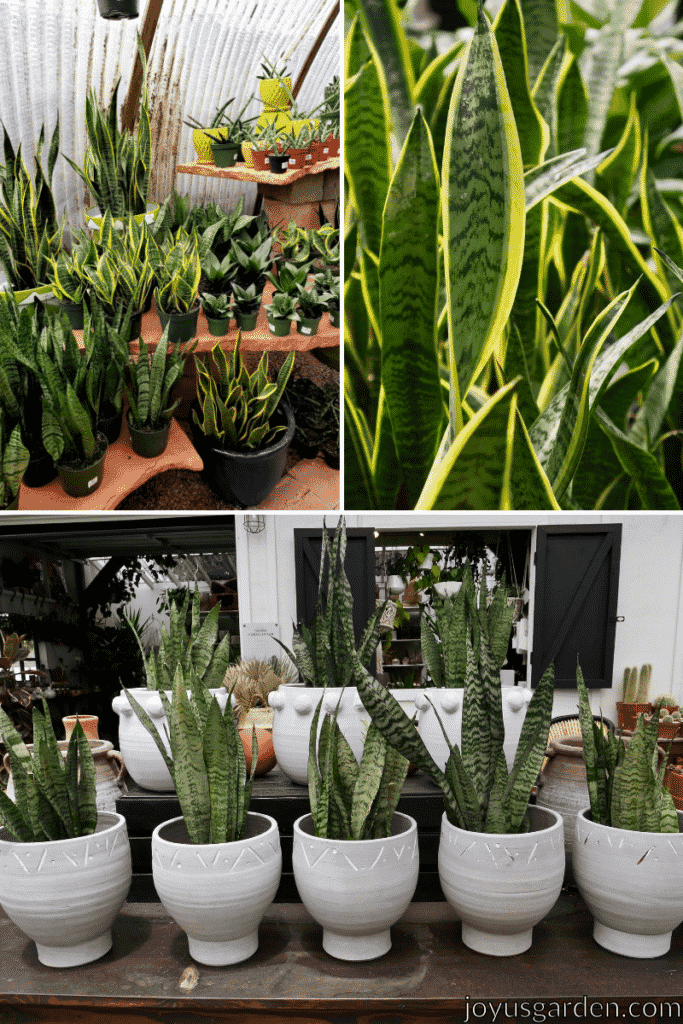
Fertilizer
I've never fertilized my Snake Plants up until this year (see note below). I do feed them every spring with a topping of worm compost and compost.
I give most of my houseplants a light application of worm compost with a light layer of compost over that every spring. Easy does it – 1/4 " layer of each for a 6″ size houseplant.
Read about my Worm Compost/Compost Feeding right here.
If you prefer fertilizing, then an organic all-purpose houseplant food would be fine. Just be sure to fertilize in the spring and/or summer, twice at the most. Snake Plants aren't that needy.
You don't want to fertilize Houseplants in late fall or winter because that's their time for rest. And, avoid fertilizing a houseplant that is stressed, ie. bone dry or soaking wet.
Note: I now give my Snake Plants a watering with Eleanor's vf-11 2-3 times during the warmer months. We have a long growing season here in Tucson and the growing conditions are tougher. I also use Max Sea once or twice in between feedings with Eleanor's.
RELATED: Here's my updated routine forFertilizing Indoor Plants.
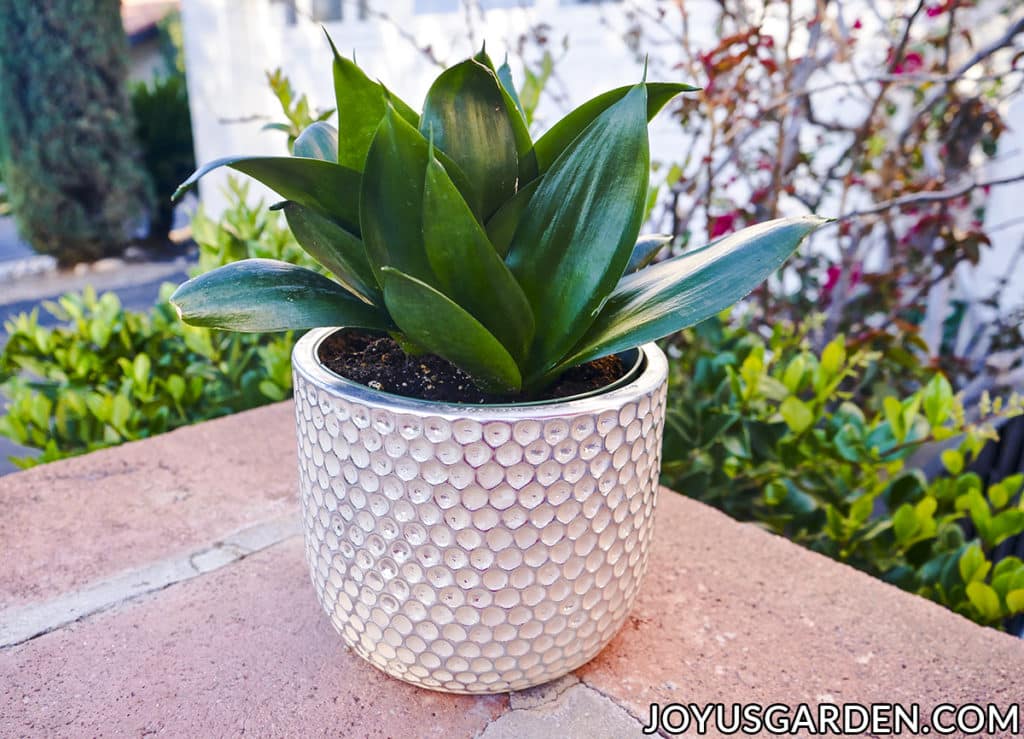
Repotting
You don't need to rush to repot your Snake Plants. They actually do better when pot-bound and I've seen quite a few which have broken their grow pots. Yes, the rhizomes and roots are that tough.
Generally, I repot mine every 2-5 years at the most. If yours is growing in low light and not growing much, then transplanting every 5-10 years will be fine.
Here's a post dedicated to repotting Snake Plants: Repotting Snake Plants: the Mix to Use & How to Do it
I've done a Guide to Repotting Plants which I think you'll find helpful, especially if you're a beginning gardener.
Safe For Pets
My cats have never ever chewed on any of my Sansevieras, indoors or out. Their leaves are pretty tough so I imagine they're not as appealing as a crunchy leaf like a Spider Plant.
I don't test how toxic plants are on my kitties (thank goodness for them!) and rely on reputable sources to get info on this subject.
Snake Plants are mildly toxic to cats and dogs. I consult the ASPCA website for my info on this subject and see in what way the plant is toxic.
Most houseplants are toxic to pets in some way and I want to Share my Thoughts with you regarding this topic. Regarding this topic, I say do a little more research and come to your own conclusion.
Flowers
Yes, they do, but don't hold your breath waiting for the flowers to appear when grown indoors. It doesn't happen very often and seems to be hit or miss. 1 of the varieties of Snake Plants growing in my garden in Santa Barbara would flower almost every year but the others wouldn't.
The flowers are whitish to greenish and smell oh so sweet.
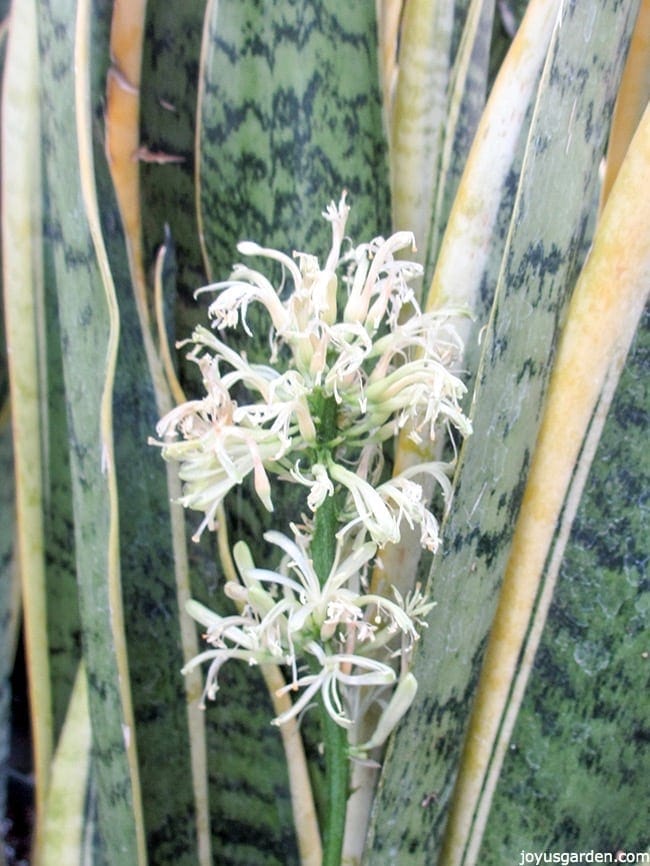
Reasons to Love Sansevierias
Sansevierias are one of the best plants when it comes to air purification because they take in toxins and give off oxygen. They're great plants for the bedroom because they release it at night. Don't expect 1 plant to purify your whole bedroom though – only the air immediately around it.
They're considered to be good luck plants, most likely because of their purifying nature.
Snake Plants are available in a wide range of sizes, forms, and colors, and patterns. Mine run the gamut from 10″ tall to 5′ tall. Something to fit every decor!
Snake Plants make great office plants because they handle dry air better than most houseplants and don't need much attention. I've seen them in long planters at airports, a tough environment indeed.
More easy office/desk plants: 15 Easy Care Office Plants for Your Desk
Are you a beginning houseplant gardener? Be sure to put this plant on your list. Snake Plant care is a breeze!
More great plants for beginning houseplant gardeners:
- Easy Tabletop & Hanging Plants for Beginning Houseplant Gardeners
- Easy Care Floor Plants for Beginning Houseplant Gardeners
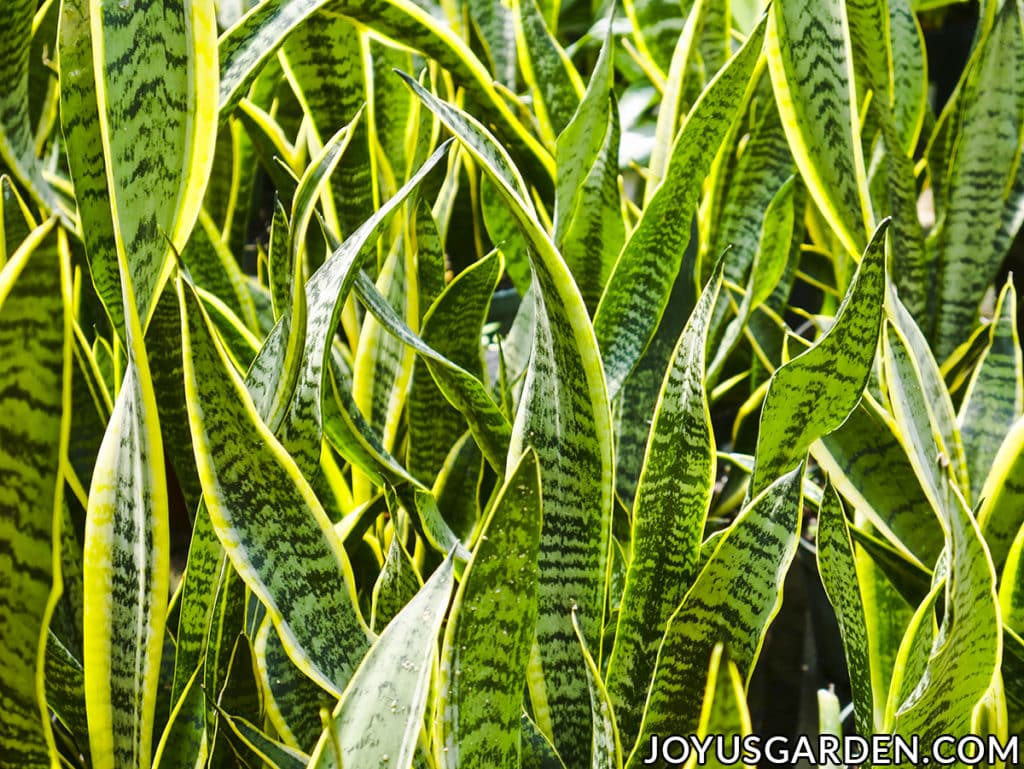
If you're looking for Snake Plants, here are a couple that might appeal to you: Black Coral Snake Plant and Sansevieria Laurentii.
Sources to buy houseplants online: Stores Where You Can Buy Indoor Plants Online
To Sum It Up: Snake Plant care is a snap. They're virtually indestructible unless you have a heavy hand with the watering can or place them in a hot, sunny window. They seem to thrive on the dry air in our homes, as well as neglect. The more you ignore them, the better they seem to do.
I love Snake Plants because of their bold, architectural, sassy look. It's a big bonus that they're one of the easiest care houseplants. Give one a try and you'll be hooked too!
Happy gardening,

Like This Content? Here's more on Snake Plant Care along with a few Helpful Houseplant guides:
- Repotting Snake Plants
- Snake Plants: Easy Care Houseplants
- Why Are My Snake Plant Leaves Falling Over?
- How To Plant Small Snake Plants
- Cleaning Houseplants: How & Why I Do It
- 15 Easy To Grow Houseplants
- Easy Care Houseplants For Low Light
You can also view our houseplant index here.
This post may contain affiliate links. You can read our policies here. Your cost for the products will be no higher but Joy Us garden receives a small commission. Thank you for helping us spread the word & make the world a more beautiful place!
First Published: May 6, 2017…
Source: https://www.joyusgarden.com/sansevierias-snake-plant-care/
0 Response to "Are Snake Plants Easy to Take Care of"
Post a Comment